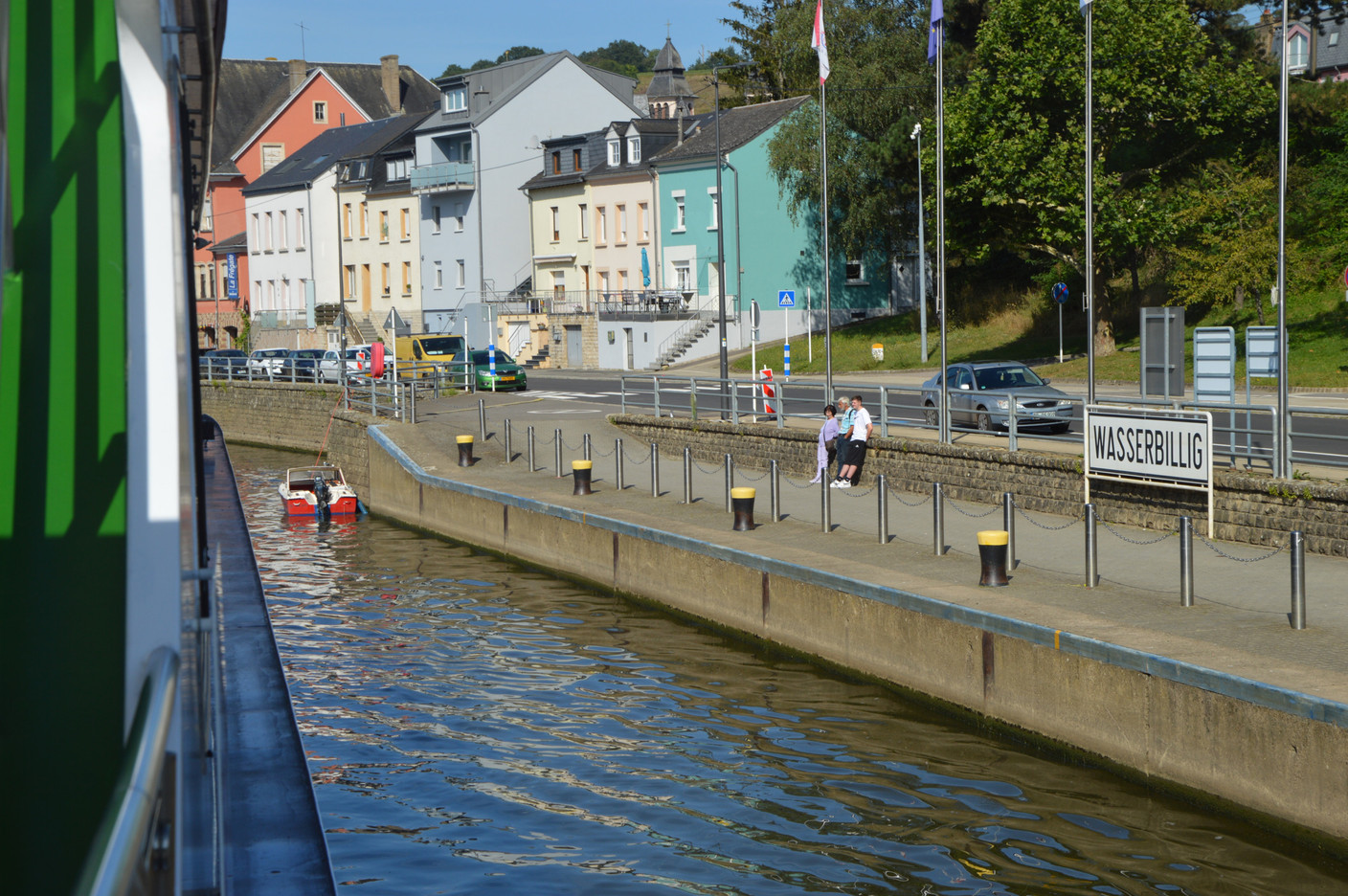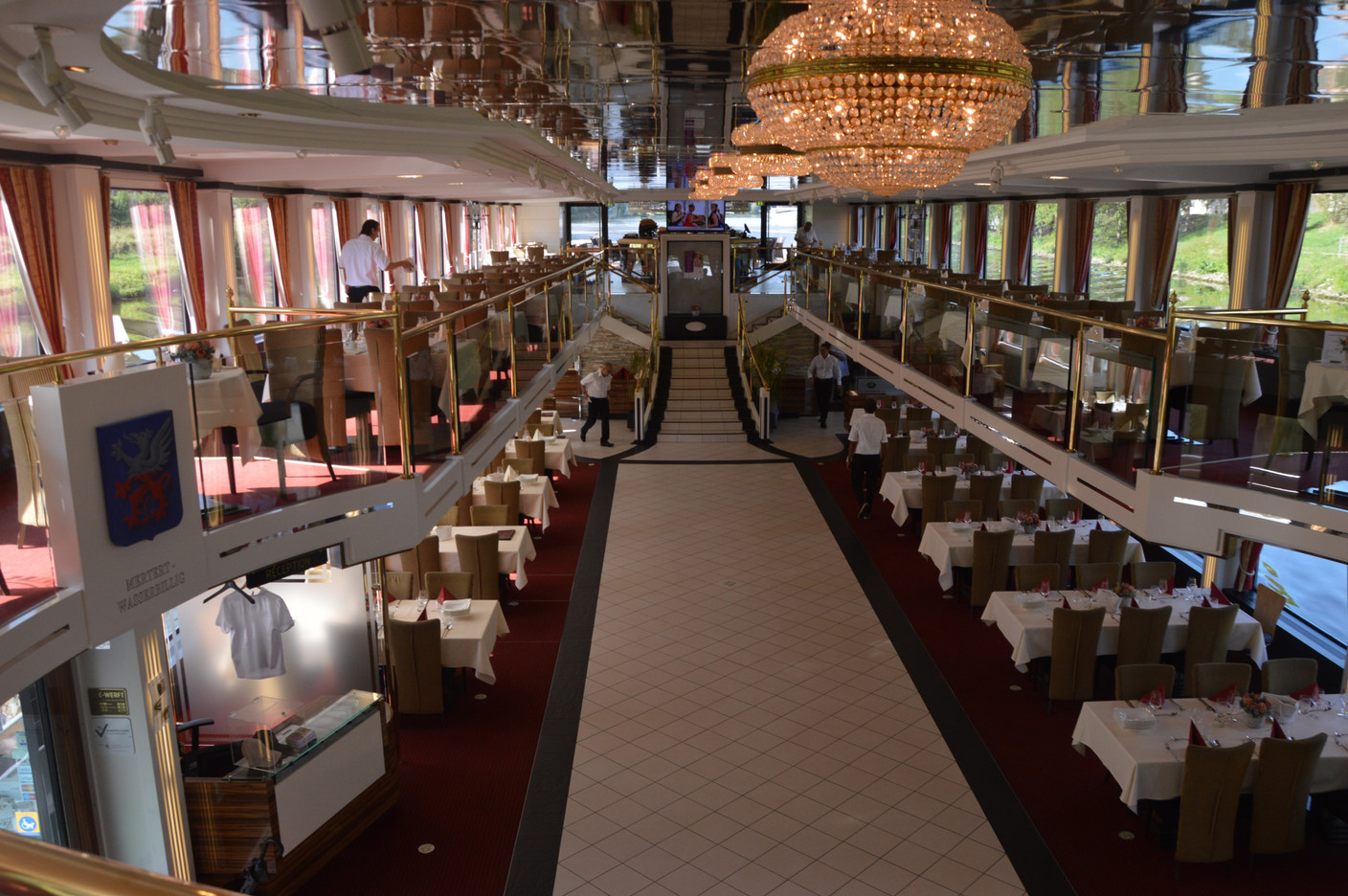Early in the morning, even though the first passengers have not yet arrived, the Princesse Marie-Astrid boat, operated by the Entente touristique de la Moselle luxembourgeoise, the non-profit association that brings together seven municipalities on the banks of the Moselle--Wasserbillig, Grevenmacher, Wormeldange, Stadtbredimus, Remich, Bech-Kleinmacher and Schengen--is already buzzing with activity.
Between the end of March and October, the 60-metre Princesse Marie-Astrid calls at these towns almost every day of the week. The name of the boat is well known, historically speaking, as it was on board the “Princesse Marie-Astrid” that the Schengen agreements were signed on 14 June 1985. But other ships of the same name have followed, and the Princesse Marie-Astrid has been offering cruises for some fifty years. “Back then, on the first boat, it was just a small kitchen. Today, we’re on the fifth, built in 2010,” explains Myriam Schwartz, a member of the Entente touristique’s administrative team.
The Princesse Marie-Astrid is a symbol, and we want it to remain an emblem of our region.
Every day, on the Grevenmacher quayside, the fresh produce delivered by La Provençale has to be received and prepared in the ship’s kitchens for lunch. Most of the produce is local, a point of honour for the director of the Entente Touristique de la Moselle luxembourgeoise, Mehdi Ksouri.
“The Princesse Marie-Astrid is a symbol, and we want it to remain an emblem of our region. That’s also why we use over 90% local products, whether it’s milk, vegetables or wines... In this way, we also have an impact on the local economy. And all this at prices that are affordable compared with some gourmet restaurants,” explains the director, for whom the formula for success--and longevity--is based on “good food, good service, a good showcase for the region and a great team spirit.” It’s a team of twenty people, with a mix of nationalities, including veterans such as front-of-house manager Joao Santos and sous-chef José Martins.
And the concept is proving popular. In 2023, the boat welcomed 32,000 passengers on board between March and December, the majority from the Greater Region. “We also welcome groups on tourist coaches, but also residents of care homes, for example,” for whom this trip on board represents a real breath of fresh air, according to Schwartz. “I used to come on the boat when I was little. And I know that for many people it’s a thrill to come back,” she says.
Regular tours between the end of March and October
The Entente touristique de la Moselle luxembourgeoise offers regular tours on certain days of the week until October, as well as themed days and evenings until December. The next one will take place on 7 September to coincide with the Wine Festival. Embarkation starts at 7pm, with fireworks at around 10pm and a meal on board. Oktoberfest, Father’s Day and the Christmas markets in Sarrebourg and Trèves will also be an opportunity to get passengers on board.
The range of services on offer has also evolved, and for some years now it has been possible to take the boat out for private hire, “for business meetings or weddings, for example. We already have around 15-20 bookings for next year,” says Scwhartz. “We’ve made a good recovery from the coronavirus, and the aim now is to stay on course, with a constant offer and quality,” adds the director.
On the quayside and on board, logistics and organisation are a daily challenge. “Running a boat like this requires a great deal of organisation. There’s the boat itself and all the technical aspects, but also the reception and catering. For example, for the meal, we have two hours to provide a quality service. So everything is thought out to the millimetre, because we always have to work to a tight schedule so that we arrive at the quay on time, have time to get the passengers on board and leave to pass through the locks on time. We have priority to pass through them, but if we are late, we no longer have priority,” explains the director.
The Princesse Marie-Astrid’s navigation is also highly dependent on its environment. “In May, we had to cancel some outings because of flooding,” says Schwartz. The boat’s team, with its wealth of expertise (cooks, waiters, technicians, captain, etc.) is constantly trying to adapt to these hazards. Since 2006, for example, the Princesse Marie-Astrid has changed berths. The current one is now equipped with a hydraulic pontoon whose height can be adapted to the water level. This means that the crew are less dependent on the water level to get their passengers on board.
An air of holiday
A few minutes before departure, it’s time for passengers to board. Upstairs in his cabin, Captain Jürgen Emmes, a 14-year veteran, is ready for departure. As they enter the ship, eyes are drawn in from all directions. To the coloured coats of arms just inside the entrance, one for each of the communes that make up the Entente touristique de la Moselle. Then to the left and right, where tables for lunch are meticulously laid out. The setting is luxurious, and the windows let in plenty of natural light and glimpses of the sun reflecting off the water. Upstairs, other tables have been set up, giving a bird’s-eye view of the room below. Behind the bar, also upstairs, two doors lead to the rear of the boat, where a small terrace has been set up, before a few steps lead up to the central terrace, which is almost as long as the boat. Some people spontaneously head for it once they’ve boarded. “It really is the holidays,” says one passenger.
Inside, some have already ordered lunch. Menus are available for groups and Sunday cruises. But for the other days of the week, customers can choose from several proposals on the à la carte menu. The menu changes every month, always with a focus on local produce: filet of beef with gromperekichelcher and seasonal vegetables for meat lovers, bouchée à la reine, veal curry or sautéed salmon, and even vegetarian lasagne, at prices no higher than those of some restaurants in the capital. You can also enjoy a drink at the bar or on the terrace.
Aboard the boat, you can see the Moselle and the countryside from a completely different perspective.
On Thursdays, the Princesse Marie Astrid departs from Wasserbilig at 11am to arrive in Schengen at 3.10pm, before returning in the opposite direction with a terminus in Grevenmacher at 6pm. In between, it passes through Grevenmacher, Wormeldange, Stadtbredimus, Remich and Bech-Kleinmacher. There are many typical landscapes to discover, between vineyards, villages, hills and forests, in a certain tranquillity. “Aboard the boat, you see the Moselle and the countryside from a completely different perspective, it’s very quiet and there’s very little noise,” points out Ksouri. The journey from Wasserbillig to Schengen, with a stopover in each of the Entente communes, takes around four hours.
This article was originally published in .




























